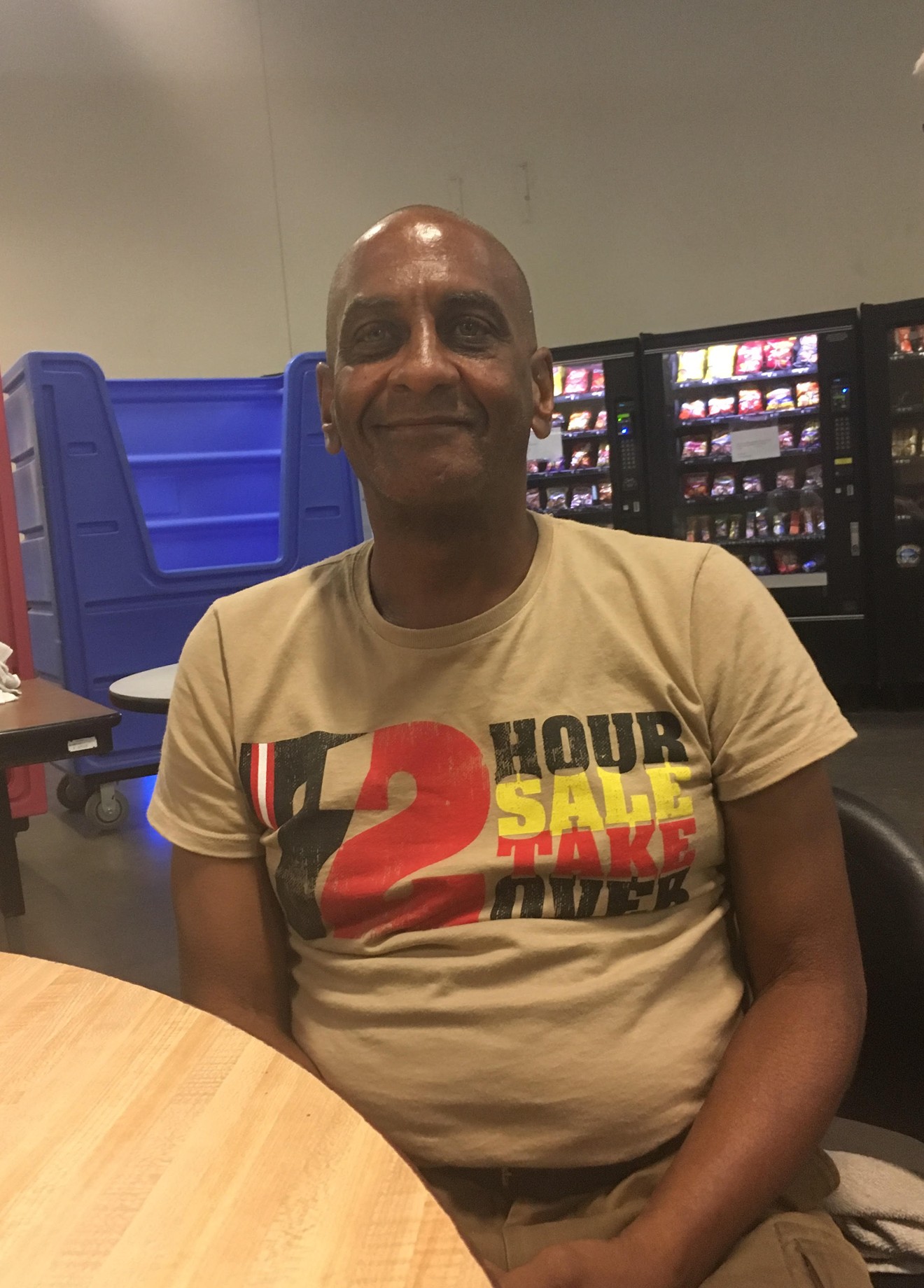Three weeks ago, Gil Lawson was sleeping on a bench near Willow Square in Phoenix. It was 2 a.m. when he jolted awake as rain droplets pelted his face.
“This is gonna be fun,” he thought facetiously.
The 54-year-old had nowhere to go. He moved to a bus stop with an awning over it and attempted to take shelter from the wind behind a short wall. But the rain from the sudden monsoon was hitting him from all angles. It was no use.
“It was coming down sideways,” he recalls. “I thought, ‘You know, you have enough to worry about already’ … I thought, ‘This sucks, really.’ I don’t want to say that word, suck, but it sucks.”
Lawson spent the rest of the night roaming around in the rain. His backpack, social security card, and ID were ruined in the process.
“Things tend to fall apart,” Lawson says. “Especially in the rain.”
Gil is no stranger to getting caught in the rain. He’s been in and out of homes and homeless shelters for the last four years, rarely staying in one place for more than 90 days.
And Lawson is not alone.
Of the estimated 5,605 homeless individuals in Maricopa County this year, about 2,059 are unsheltered, according to the Maricopa County’s 2017 Homeless Point in Time count.
As the moisture from Mexico flows to Phoenix up Interstate 10, the warm tropical air brings thunderstorms from mid-July to September, state climatologist Nancy Selover says.
These summer months tend to be especially brutal for those who are unsheltered. Whether it’s the rain, wind, haboobs, or blistering heat, Phoenix’s homeless are at risk during monsoon season.
Shelters such as St. Vincent de Paul of Arizona, Central Arizona Shelter Services, the Salvation Army, and other advocacy organizations work to mitigate this. But Jowan Thornton, the Salvation Army’s outreach and case management director for the Southwest division, says there’s only so much that can be done.
“Things change for folks who are unsheltered when it’s raining,” Thornton says. “People [who have homes] tend to be less active, hunker down, and stay home, getting away from the elements. But for folks that don’t have housing available, things change in a much more adverse way.”
David Smith, the development director at CASS, says this monsoon season has been especially brutal for Phoenix’s homeless because many used the Burton Barr Central Library as an impromptu shelter before it closed due to storm damage this July.
“It’s dangerous to be out in a monsoon,” Smith says. “There’s flying debris that can cause serious injury to individuals outside during one of those severe storms.”
Thornton, who works with transient families, says many of Phoenix’s homeless will end up taking shelter in a river bottom if they’re on a wait list to get into a shelter. Some families can be on wait lists
He’s heard enough stories from clients to know monsoons are a real problem. He’s heard from mothers who have had all their belonging swept away during a flash flood.
“It’s hard for us to fathom because we have all of our precious belongings locked up and safe,” Thornton says. “Those facing homelessness in the midst of extreme weather systems can lose a lot of stuff in an instant.”
Brent Babb, the Salvation Army’s Project Hope program supervisor, recalls a homeless man in a wheelchair recounting a
“You just get a flood that rolls through within 30 minutes, and don’t have time to brace for impact,” Thornton says.
Billowy clouds that look like cauliflower with fuzzy, cotton-like tops are one of the only indications someone without access to TV and weather apps might have that a storm's brewing, climatologist Selover says.
In 2016, the Maricopa County’s Medical Examiner’s Office’s transient report showed at least 15 homeless deaths between June and August had to do with weather — ranging from complications from environmental heat exposure to dehydration or hyperthermia.
Beyond that, the county identified multiple blunt force trauma deaths. Few details were provided about the causes, but Smith said some may have occurred when debris hit them during a storm.
Thornton says funding and governmental resources are skewed to help the heat relief effort in Phoenix, rather than to help with monsoons — but both threats are real if you have no shelter.
“An emergency is an emergency,” Thornton says. “For lack of a better term, whether you’re dying from a gunshot or dying from a stab wound, both are dire. Specifically, we can’t pretend [monsoons] don’t claim people who are homeless.”
Lawson is a Boston native with twinkling aquamarine eyes. His warm East Coast accent is uncannily inviting, and he says he used to work in
He says his life began to unravel when he was disabled 25 years ago. He crushed vertebrae in his back on a job, which required three rods, nine screws, and a lot of Motrin. He says this stopped him from working.
Then, after a spat with a homeowners' association four years ago, he says he was booted out of the house where he was staying. It was a perfect storm.
He says the St. Vincent de Paul day shelter will sometimes hand out trash bags when rain is expected, and he’ll poke a hole for his head in the bottom, creating a makeshift poncho.
But usually, he says, without phone or access to weather news, the rain is a surprise.
“It's something that sneaks up on you," he says. "You’re not ready for it.”












